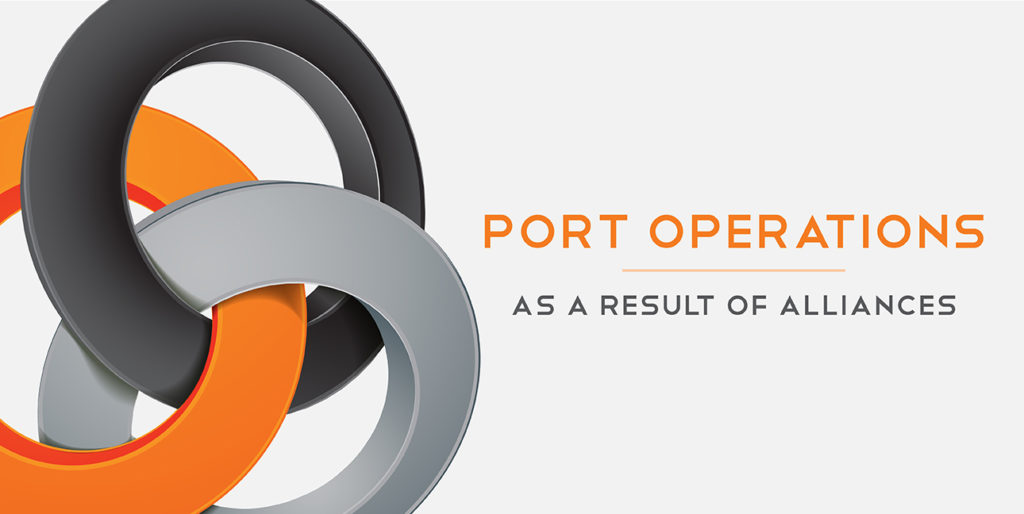As the demand for consumables delivered to doors at the click of a button grows, the means to deliver these goods also needs to. From ships and ports to shipping lines, growth is the main focus. If the shipping industry were social media, “bigger” would be trending. Consumers want to their goods quickly, and shipping lines are beginning to work together to meet that need. One trend we saw in 2017, and only expect to see more of this year, is the joining of shipping lines to form alliances.
Alliances, the sharing of ships to transport goods, have resulted in megacarriers, which are challenging the status quo of port operations. Megacarriers, which continue to add more cargo and grow in size, are utilizing ports that are designed for smaller ships. As alliances continue to form, ports will need to make changes to their daily operations, infrastructure, and management.
While alliances have many benefits, many of the perks are seen at sea and during transportation, while the challenges are found once those ships reach port.
Benefits at Sea
By forming alliances, shipping lines are hoping to take on bigger competition and control rates. This will mean not only lower costs for the consumer but also cost-savings for the lines and across the board.
By packing their cargo onto one ship, lines are eliminating the use of half-empty vessels, resulting in better fuel-efficiency and major cost-savings. The combined efforts also result in increased predictability and timeliness when it comes to port arrivals. When networks combine, they are forced to operate on each other’s schedules and meet deadlines. There is less flexibility to push back deadlines or put projects on hold.
Challenges at Ports
As mega vessels grow, the demand for mega ports also rises. The ships are growing, but it is ports that will need to make changes. With larger ships replacing multiple smaller ones, ports will begin to feel the strain. To accommodate these ships, ports will need deeper water, larger cranes, and longer berths.
The most common measures required to future-proof ports are:
- Ensuring water depth through dredging or locks
- Enhancing length and strength of quay walls
- Increasing crane and crane rail size
- Increasing yard space
- Improving container traffic, buffer capacity and onward routing
In many cases, these changes mean major construction and constructions costs. These costs may result in strains on budgets as ports are forced to upgrade their infrastructure and purchase more real estate.
When it comes to unloading these packed ships, some ports are turning to automation to help unpack more cargo in the same amount of time. As they are still expected to meet the same deadlines, automation seems a better solution than manual labor. But, this could result in higher costs and a loss of jobs.
Megacarriers already hold a lot a power over ports and can take their cargo somewhere else if their needs are not met. This means ports need to be ready to make changes in order to keep business.
We will continue to watch this trend and monitor what it means for shipping lines, consumers, and ports. Follow our blog for updates!

